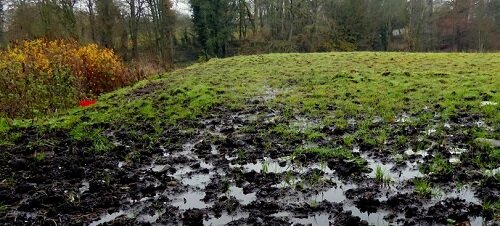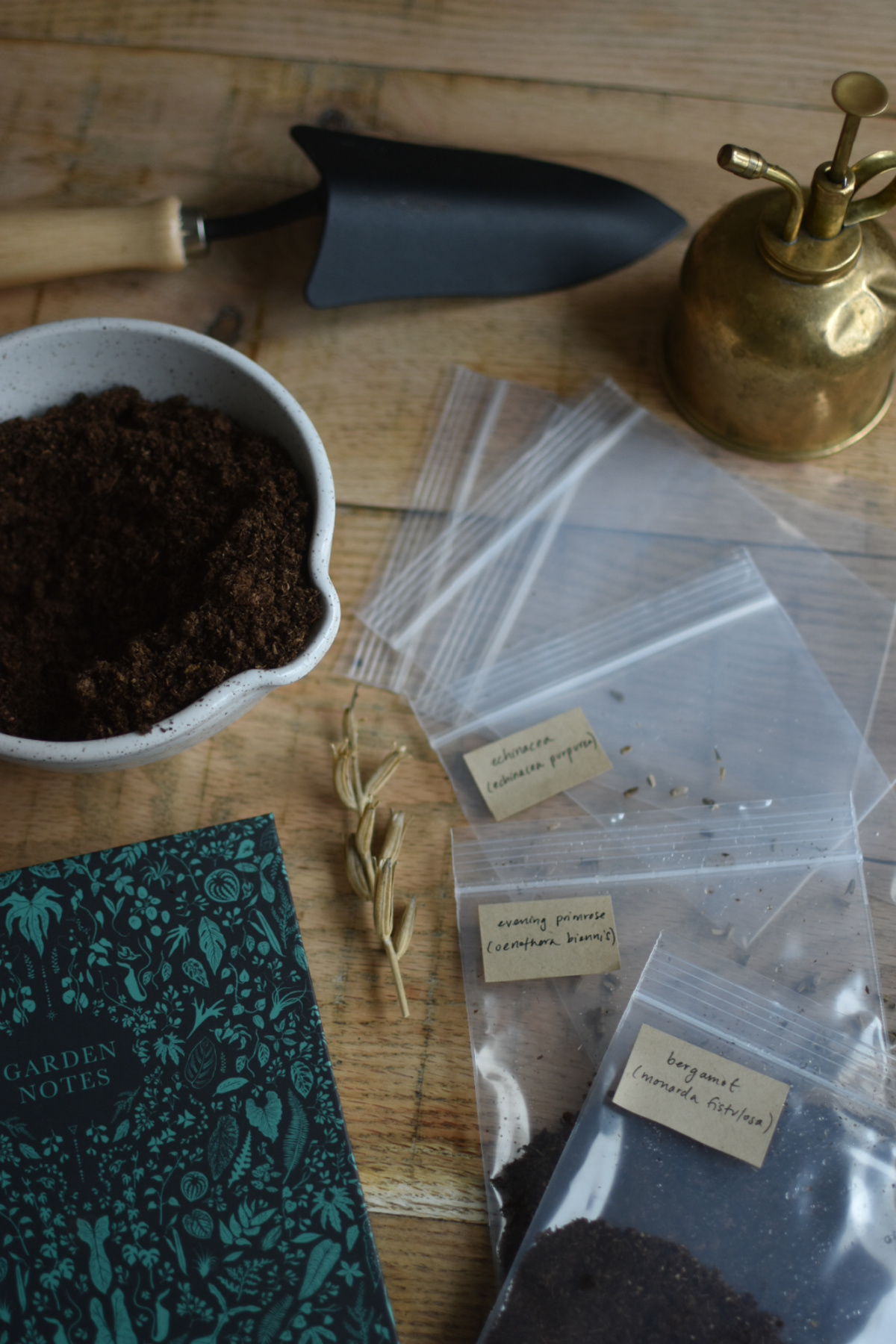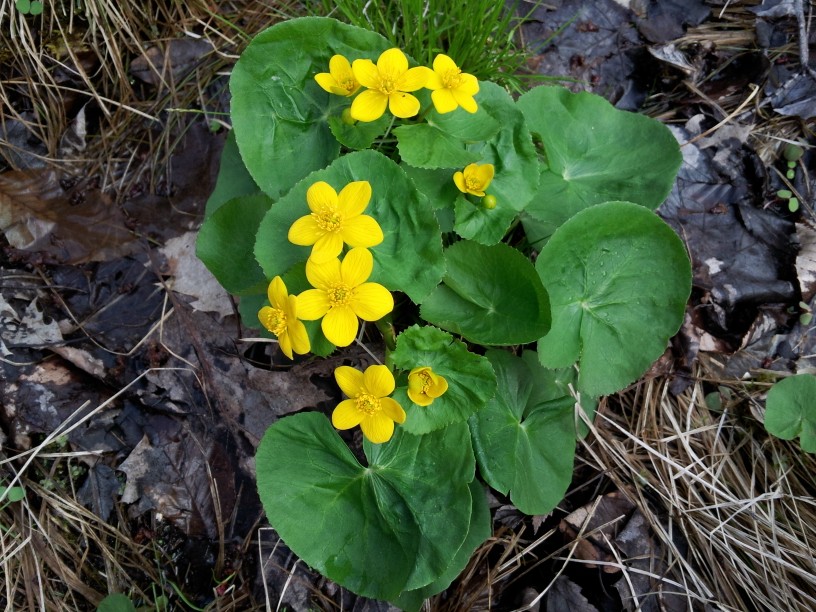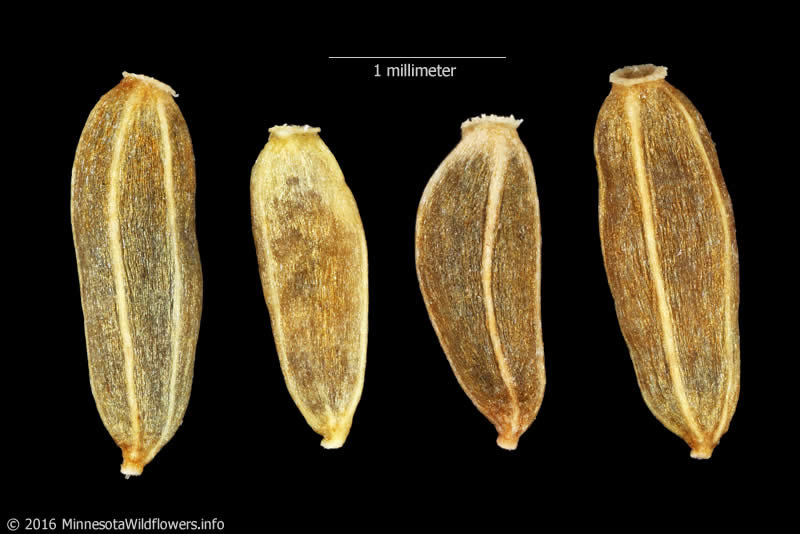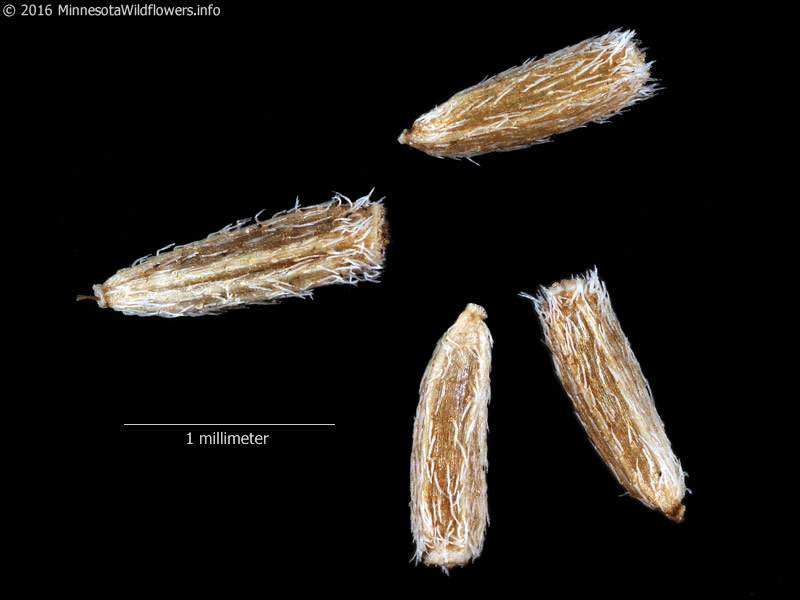At this time, the seeds of Wild Geranium (Geranium maculatum) are likely ready for harvest.
Wild Geranium emerges from the ground, flowers, sets seed and disperses its seed by mid-June to early July. Wild Geranium is an easy to establish woodland plant, particularly for woodlands in association with oaks and hickories. Use it in shady borders, native plant gardens or open woodland gardens. Once established, Wild Geranium will readily self-sow and may form large patches.

Seed Collection:

NOTE: These are seeds from Geranium pratense.
Photo Credit: https://www.rosybee.com/blog/2020/7/collecting-geranium-seeds
Distinctive fruit capsules are produced 3-5 weeks after the plant blooms. The long, central beak-like column (resembling a crane’s head) starts out bright green and turns dark brown when ripe.

The bulbous base has five cells, each containing a large black seed. As the seed matures, the central column begins to dry. As it dries, it begins to bow creating a coiled tension. Eventually the tension is released by catapulting the seed away from the plant. Monitor the seed closely at this stage and collect the seed heads as they change from green to brown or as the first seeds are dispersed.

Photo Credit: https://wildeherb.com/2010/07/03/wild-geraniums-gone-to-seed/
Collect them by carefully cuppying your hand around a pair (they tend to grow in pairs) of ripe seedheads and cutting with garden scissors. Do not pull the seedheads from the plant as that runs the risk of triggering the plant to eject its seeds.
Watch a very brief slow-motion video of a seedpod ejecting each of its five seeds.

https://www.minnesotawildflowers.info/flower/wild-geranium#lboxg-4
Processing of Harvested Seed and Storage:

Place the seedheads in a closed paper bag (to ensure that none of the seeds are catapulted elsewhere) and leave them to fling open by themselves for a week or so.

https://www.prairiemoon.com/geranium-maculatum-wild-geranium-prairie-moon-nursery.html
Seed can be stored dry for a couple of weeks, but should be kept in moist potting soil for long term storage. Seed requires 2 to 3 months of cold/moist stratification prior to germination.

Carefully empty the seeds from the paper bag into a labeled ziplock bag (plant name and date); then partially fill it (1/3 full) with moist potting soil and seal the top. Carefully mix the seeds into the moist soil by gently shaking the bag, inverting the bag, and also gently pressing on the outside of the bag with your fingers. Leave in the refrigerator for 60-90 days before germinating.
Propagation by Seed:
Most seed will germinate reliably the following spring after 2 to 3 months cold/moist stratification. Seeds will have higher germination rates the longer the cold period.
When sowing the seeds in the fall, plant each 1/8 inch deep in a prepared seed bed so that the seed overwinters and germinates naturally in spring.

Photo Credit: valkyrieh116 (https://www.flickr.com/photos/valkyrieh116/4360193931/)
When beginning plants indoors after cold/moist stratification of your harvested seeds, plant each seed no deeper than 1/8th of an inch into your potting mix. Keep the soil of each container moist until germination occurs. They should not be allowed to dry out. Germination takes seven to 10 days. Then transplant the contents of each container into the spots you’ve selected to establish these plants.
Seed-started plants will flower two to three years after sowing.

Happy harvesting!

